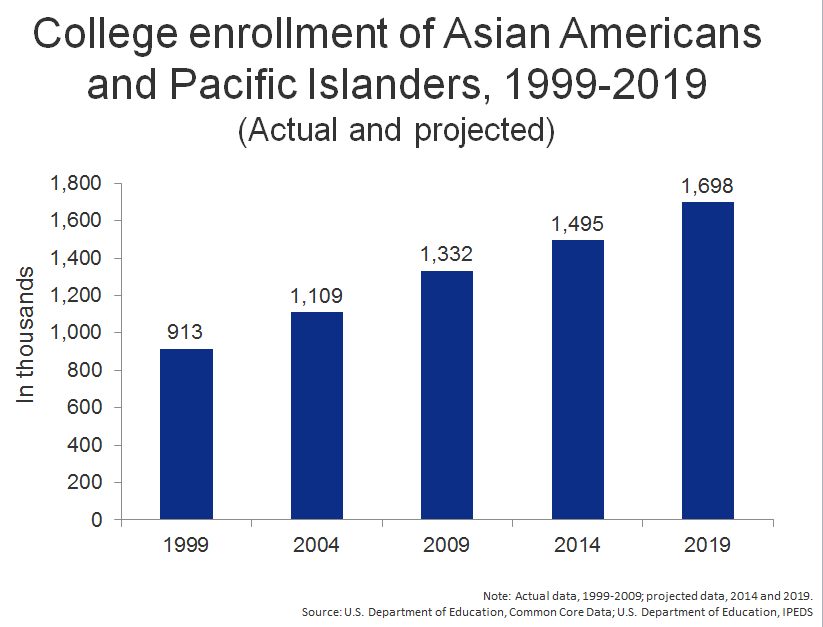enrollment
30 percent increase projected for Asian American and Pacific Islander undergraduates
In the coming years, Asian American students and Pacific Islanders are projected to be one of the fastest-growing student segments enrolling in higher education (along with Latinos). According to the latest CARE (Commission on Asian American and Pacific Islander Research in Education) report, college enrollment of AAPI’s (Asian Americans and Pacific Islanders) will increase nearly 30 percent between 2009 and 2019:
A closer look at this population in the same study shows that AAPI enrollments in community colleges are likely to outpace all other sectors of higher education. In addition, according to this study, these students carry many risk factors that are correlated with lower persistence and completion, including part-time enrollment, delayed enrollment (average age is 27.3 years), and working full-time while enrolled. Southeast Asians and Pacific Islanders in particular have very high rates of attrition.
The challenge and opportunity that AAPI students represent for higher education will likely be substantial, affecting recruitment, retention, overall enrollments, and completion rates. Noel-Levitz research on incoming Asian students shows that, more than students from other backgrounds, Asian students indicate confusion when trying to choose an occupation, as reported in our 2011 National Freshman Attitudes Report—Addendum by Race/Ethnicity. In addition, Asian students were more likely to answer that they would rather be doing other things than going to college. This finding from the national data set of the College Student Inventory is thematically congruent with this statement from the CARE report: “AAPIs who were the first in their family to attend college were three times more likely to indicate that they had considered leaving college for non-academic reasons than did AAPI students with parents who had attended college…” (p. 28). Indeed, even though their numbers are increasing, the CARE report shows that a large sector of the AAPI population continues to experience very low rates of college participation and educational attainment.
These observations speak to the importance of reiterating the value of post-secondary education with AAPI students and the need for cultural sensitivity in campus communities. As you and your colleagues discuss strategies to serve diverse student groups on your campus, how might conversations with students of different cultural backgrounds include a heightened awareness of career and occupational choices (i.e., the realm of options in the world of work), as well as the resources needed to accomplish these goals (i.e., time, effort, courses, investment)? Furthermore, as these dialogues unfold, how can you establish specific strategies such as programmatic interventions and instructional scaffolding to address possible deterrents?
The academic experience that your campus provides, blended with sensitivity to each student’s cultural background and ethos, sets the stage for a plan for success (as defined by that student), thus supporting persistence and completion.
This is one of many topics that we will be discussing at our 2012 Symposium on the Recruitment and Retention of Students of Color, to be held April 18-20, 2012, in Denver, Colorado. I highly recommend attending, not only to hear strategies from presenters, but also to share experiences with colleagues from a diverse array of campuses. Or if you would like to discuss how you can strengthen your service to these distinctive student populations, please e-mail me.
